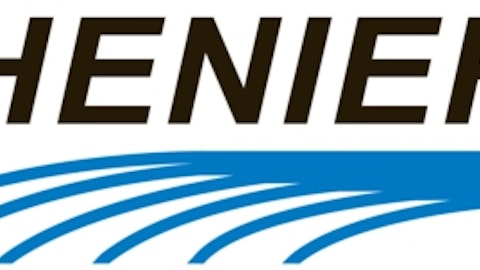As last week neared its conclusion, Transocean LTD (NYSE:RIG) CFO Esa Ikaheimonen stood before analysts at Barclay’s CEO Energy-Power Conference and presented a cogent look at the directions he perceives for his company. While Transocean LTD (NYSE:RIG)’s still relatively new finance chief was appearing at the event, which was billed as a gathering of chief executives, it’s unlikely that the company’s CEO Steven Newman could have provided a more solid look at the offshore driller.
Transocean LTD (NYSE:RIG) is, as most Fools recognize, the biggest member of the drilling contractor contingent. Ikaheimonen noted that the company has been purposefully less aggressive than many of its peers — including SeaDrill (NYSE:SDRL), where he served as CFO before joining the bigger company — in adding expensive units to its fleet. Nevertheless, as he said, management has been “focused on removing lower specification assets,” especially in it jack-up fleet.
Macondo morass
Ikaheimonen met head-on the subject of “uncertainties” at the company. These include the still lingering aftermath of the 2010 explosion of the Macondo well, which the company was drilling in the Gulf of Mexico for BP (NYSE:BP) . He pointed out that Transocean LTD (NYSE:RIG) had earlier reached a settlement with the Department of Justice on civil and criminal liabilities. As a result, it has agreed to pay $1.4 billion in fines over a five-year period.
Phase 1 of a federal trial on the responsibilities that led to the blowout concluded in New Orleans four months ago, although no decision on that phase has been rendered. A second phase of the trial will begin later this month. Transocean LTD (NYSE:RIG) has already received indemnification by BP in the event of findings of either negligence or gross negligence against the driller.
A second item of litigation, involving a November 2011 oil spill at the Frade Field, offshore Brazil, where Transocean LTD (NYSE:RIG) was drilling for Chevron (NYSE:CVX), was settled the day after the Braclay’s presentation. While Transocean has been absolved of financial responsibility, Chevron will pay a comparatively modest $130 million in compensatory actions.
The strategies
Much of the rest of the presentation centered upon key strategic steps being taken to strengthen the company:
- As Ikaheimonen said, “The first one is to fix margins.” That’s clearly an appropriate objective, since the company’s trailing-twelve-month operating margin sits slightly below 18%, compared with about 34% for
Diamond Offshore Drilling Inc (NYSE:DO), typically considered its primary rival, and 41% for Seadrill. The approaches being enacted to reach this target include improved rig utilization (with an avowed target of 95%), a reduction of onshore expenses by about $300 million by 2015, and cutting into the $5 billion pool of offshore expenses.
- Secondly, the company is seeking to “fix the portfolio.” As noted, management has been unloading commodity jack-ups to the point that this shallow-water portion of its fleet has been reduced to 10 high-specification units.
Apart from its competition, Transocean has generally preferred to build its new rigs on contract, rather than speculatively. In part as a result, its current $27 billion backlog sits atop the industry.
- Ikaheimonen described his company’s third primary objective as the implementation of a “robust long-term capital allocation philosophy, which includes growing return of capital to our shareholders.” As he said, two of the elements involve the balance sheet, about which he said, “A strong and flexible balance sheet is not just a luxury, it’s actually a bit of a necessity … for a company like Transocean that still faces uncertainties such as Macondo.”
As to returns to shareholders, management came away from a proxy fight earlier this year with a decision to initiate dividend payments of $2.24 annually per share. Ikaheimonen called it a “starting point (that) got good support from the shareholders. ”
Deeper and stronger
No presentation by an offshore drilling contractor would be complete without at least a cursory survey of market conditions. “Obviously, the recent exploration successes have been very encouraging, with high volume discoveries in different parts of the world. And it’s important to note that up to 80% of the discovered oil volume comes from the deepwater.”
Transocean’s fleet is well prepared for the continued movement into deeper waters — specifically, in the Gulf of Mexico, both East and West Africa, and eventually a return to the previously thriving Santos Basin in Brazil. Beyond that, the company also is ready for revitalized activity in those venues where jack-ups are in increasing demand.
Bottom Line
However, with continued Macondo question marks, along with the need to upgrade the fleet, and currently puny margins, I’m a believer that Transocean stock is only for those with patience and a longer-than-normal investment time horizon.
The article Transocean Is Aiming for Higher Ground originally appeared on Fool.com is written by David Smith.
Fool contributor David Smith owns shares of BP p.l.c. (ADR) and Transocean. The Motley Fool recommends Chevron and Seadrill. The Motley Fool owns shares of Seadrill and Transocean.
Copyright © 1995 – 2013 The Motley Fool, LLC. All rights reserved. The Motley Fool has a disclosure policy.






